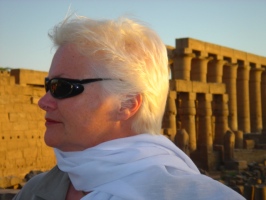My apartment is in the second arrondissement, one of the 20 “districts” of Paris. Thirza Valloisis, author of Around and About Paris, Volume I, II, III, gives us a taste of the 2nd’s history below (with some editing by me).
*****
The 2nd arrondissement drew in the most destitute segments of society between the 15th and 17th centuries, when the Hundred Years’ War and the Black Plague had much of the population homeless and starving. Deserting the countryside, they made their way into the capital.
These newcomers became the terror of the town, organised into fearsome bands with their own language and laws, metamorphizing into “blind” or “maimed” beggars who preyed upon passers-by. By night they vanished into the neighborhood’s dead-end alleys where their “afflictions” vanished. These alleys came to be known as “Cours des Miracles,” the most notorious one the rue Neuve-Saint-Sauveur (near today’s rue du Nil, rue des Forges, and rue de Damiette), and ran conveniently along the city walls, the gaps of which provided exists in case of emergency. Â
In The Hunchback of Notre Dame, Victor Hugo brought worldwide notoriety to the Cour des Miracles of rue Neuve-Saint-Sauveur, “a gutter of vice and beggary, of vagrancy that spills over into the streets of the capital […] immense changing-room of all the actors of this comedy that robbery, prostitution and murder play on the cobbled streets of Paris.
Prostitution tended to operate in the south-eastern section of the 2nd, attracting an abundant reservoir of clientele provided by Les Halles, where it left the mark of its trade by way of expressive street names such as rue Tire-Boudin (“sausage-jack”, now Marie-Stuart), and rue Gratte-Cul (“bum-scraper,” now Gaston Dussoubs). [Ick! That last one is my street!]
Attempts to do away with prostitution were usually half-hearted, ineffectual, and largely depended on the inclinations of the individual monarch. Thus, at the time of Louis XV, by no means averse to the pleasures of the flesh, the neighbourhood flourished as a breeding-ground for courtesans for the upper classes. It was in Madame Gourdan’s glamorous establishment on rue de la Comtesse d’Artois (now Montorgueil [where I buy groceries!]), that the notorious pimp Jean du Barry discovered Jeanne Bécu, Mademoiselle Lange by her trade name, soon to be married off and become the King’s mistress as the new Comtesse du Barry, the last of France’s royal favourites, to the outrage of the court.
By then, however, the “Cour des Miracles” was no more. In 1667 Louis XIV ordered his police lieutenant Nicolas de La Reynie to clean it up. Many of the rabble ended up in the galleys of the king’s growing fleet or as a way of providing brides for those in the newly acquired Louisiana territory.
* * * * *
My neighborhood is now bustling but clean, rambunctious but professional, and full of color and personality but not scary. Vive le 2nd!

Post a Comment